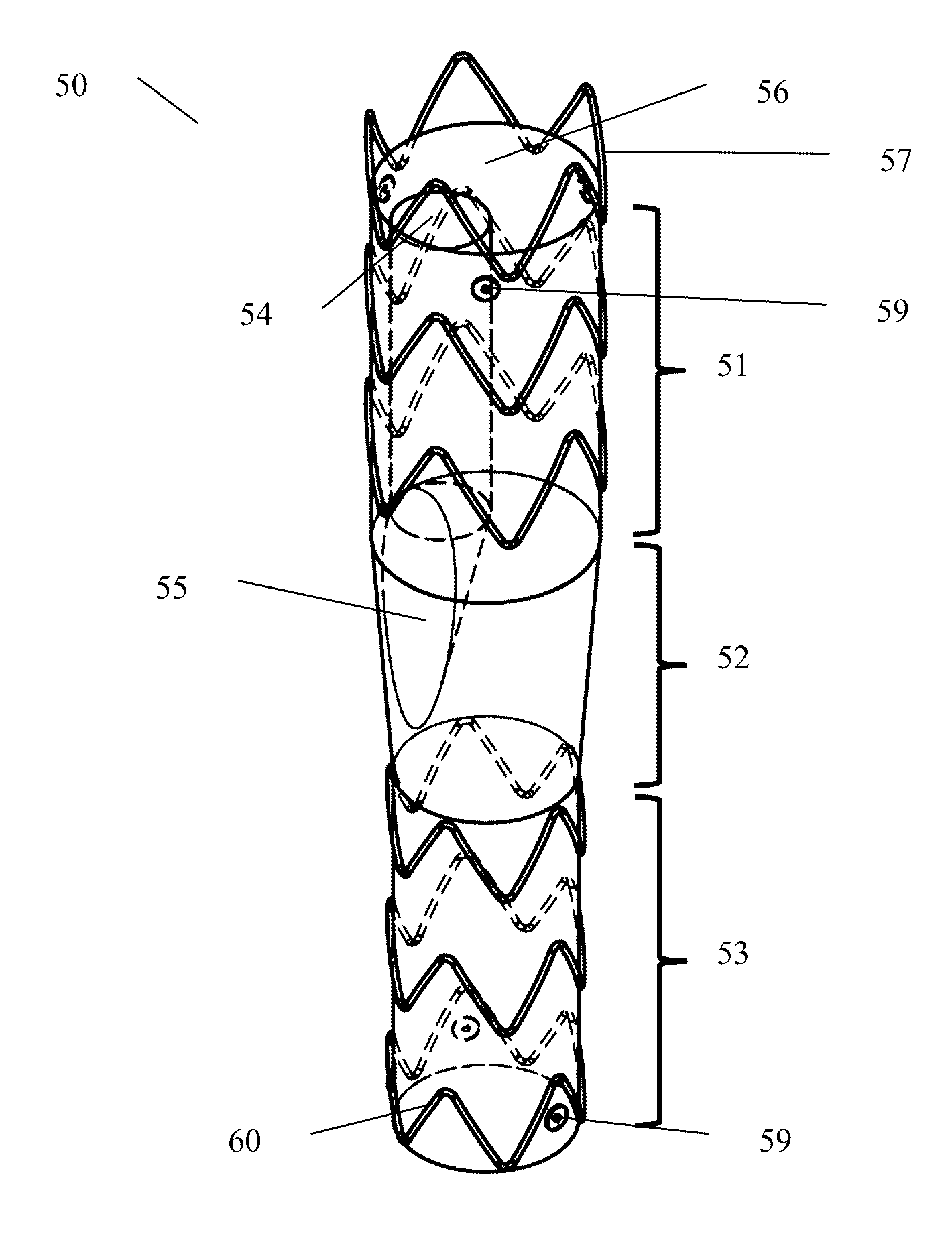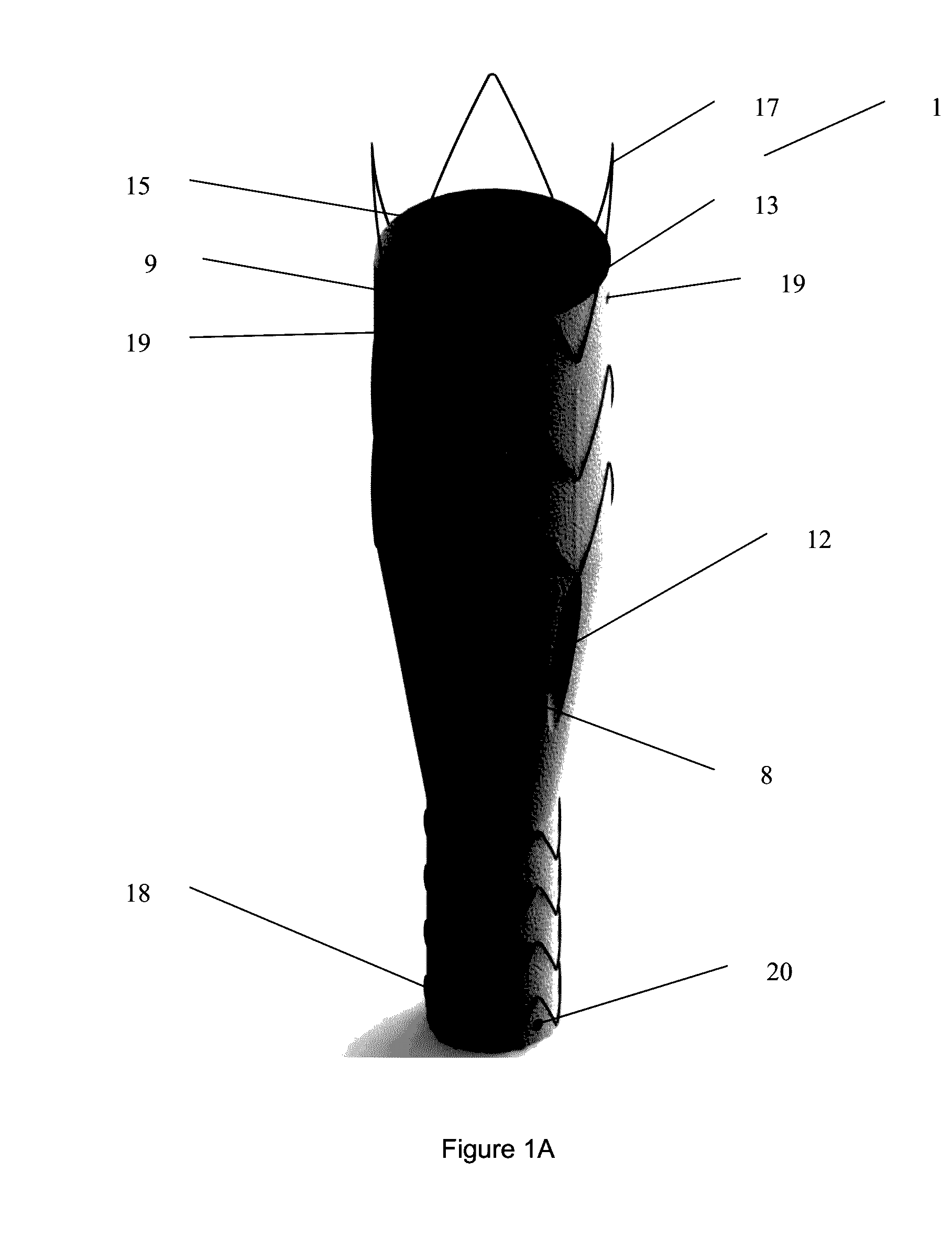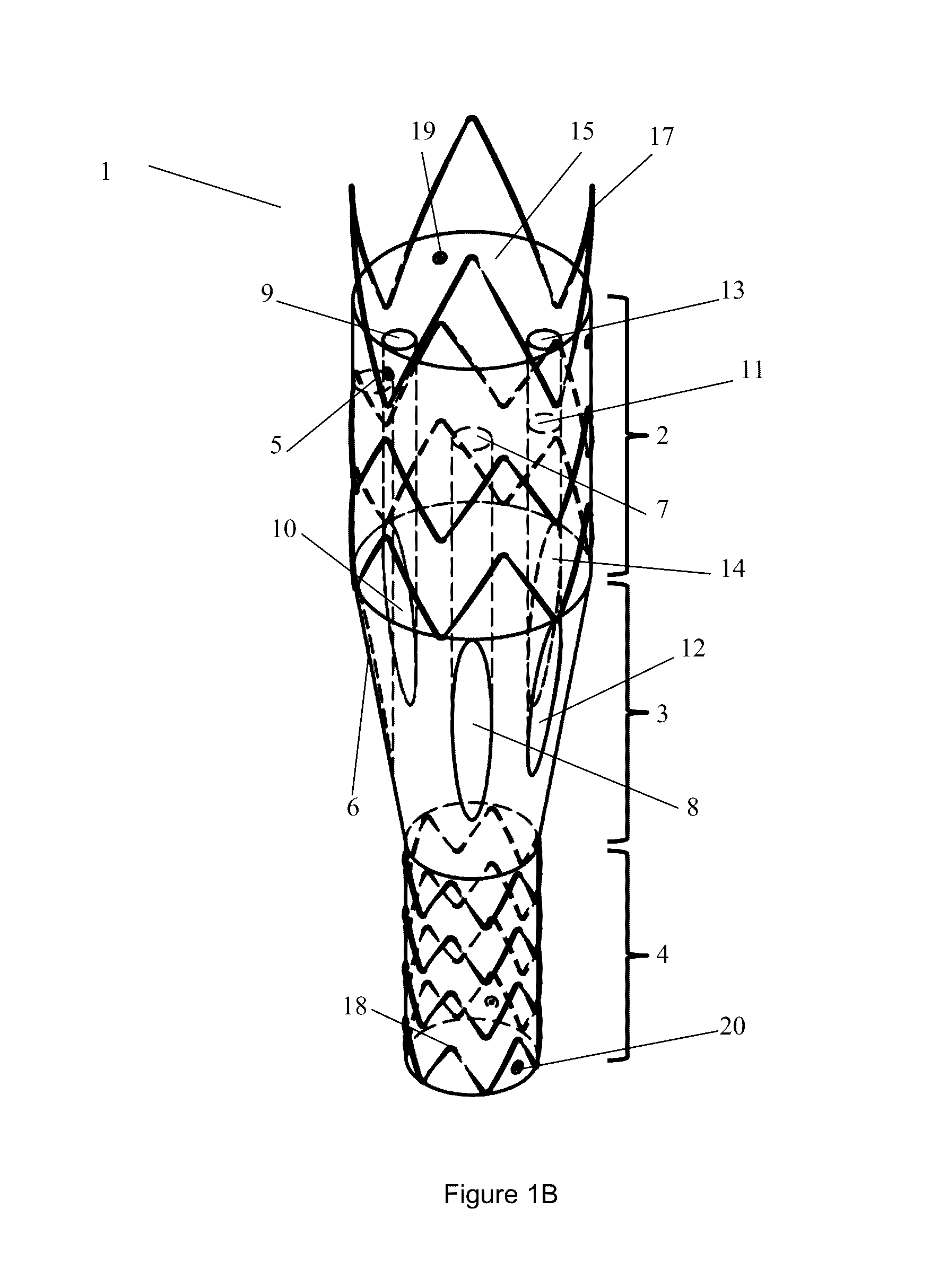Endoprosthesis for endovascular treatment of thoracic-abdominal aortic aneurysms or dissections and endoprosthesis for endovascular treatment of abdominal aortic aneurysms or dissections which compromise the iliac arteries
a technology for aortic aneurysms and endoprostheses, which is applied in the field of endoprostheses implantable inside the human body, can solve the problems of affecting the implantation of stent grafts, affecting the vascular function of stents, and affecting the vascular function of stents, and achieves the effects of improving the vascular function, reducing the cost of production of stents, and improving the vascular vascular vascular vascular vascular vascular vascular
- Summary
- Abstract
- Description
- Claims
- Application Information
AI Technical Summary
Benefits of technology
Problems solved by technology
Method used
Image
Examples
Embodiment Construction
“Thoracoabdominal” Embodiment
[0064]The endoprosthesis (1) object of the present invention can be manufactured from a tubular coating—a biocompatible polymeric material (ePTFE, polyester or similar) graft with or without the support structure—biocompatible material (stainless steel, polymer, nitinol, molybdenum chromium steel or similar material) stent.
[0065]In a preferred embodiment of the invention, represented by FIGS. 1A to 3B, the endoprosthesis (1) according to the invention comprises three distinct sections being: a proximal region (2), an intermediate region (3) and a distal region (4). The endoprosthesis (1) is designed for the endovascular treatment of thoracic-abdominal aortic aneurysms or dissections.
[0066]The endoprosthesis (1) has a support structure—a proximal stent (17) and a distal stent (18)—here represented by several spaced apart rings in the form of the traditional “Gianturco z-stent” (see also U.S. Pat. No. 4,580,568). However, this structure can have a differen...
PUM
 Login to View More
Login to View More Abstract
Description
Claims
Application Information
 Login to View More
Login to View More - R&D
- Intellectual Property
- Life Sciences
- Materials
- Tech Scout
- Unparalleled Data Quality
- Higher Quality Content
- 60% Fewer Hallucinations
Browse by: Latest US Patents, China's latest patents, Technical Efficacy Thesaurus, Application Domain, Technology Topic, Popular Technical Reports.
© 2025 PatSnap. All rights reserved.Legal|Privacy policy|Modern Slavery Act Transparency Statement|Sitemap|About US| Contact US: help@patsnap.com



